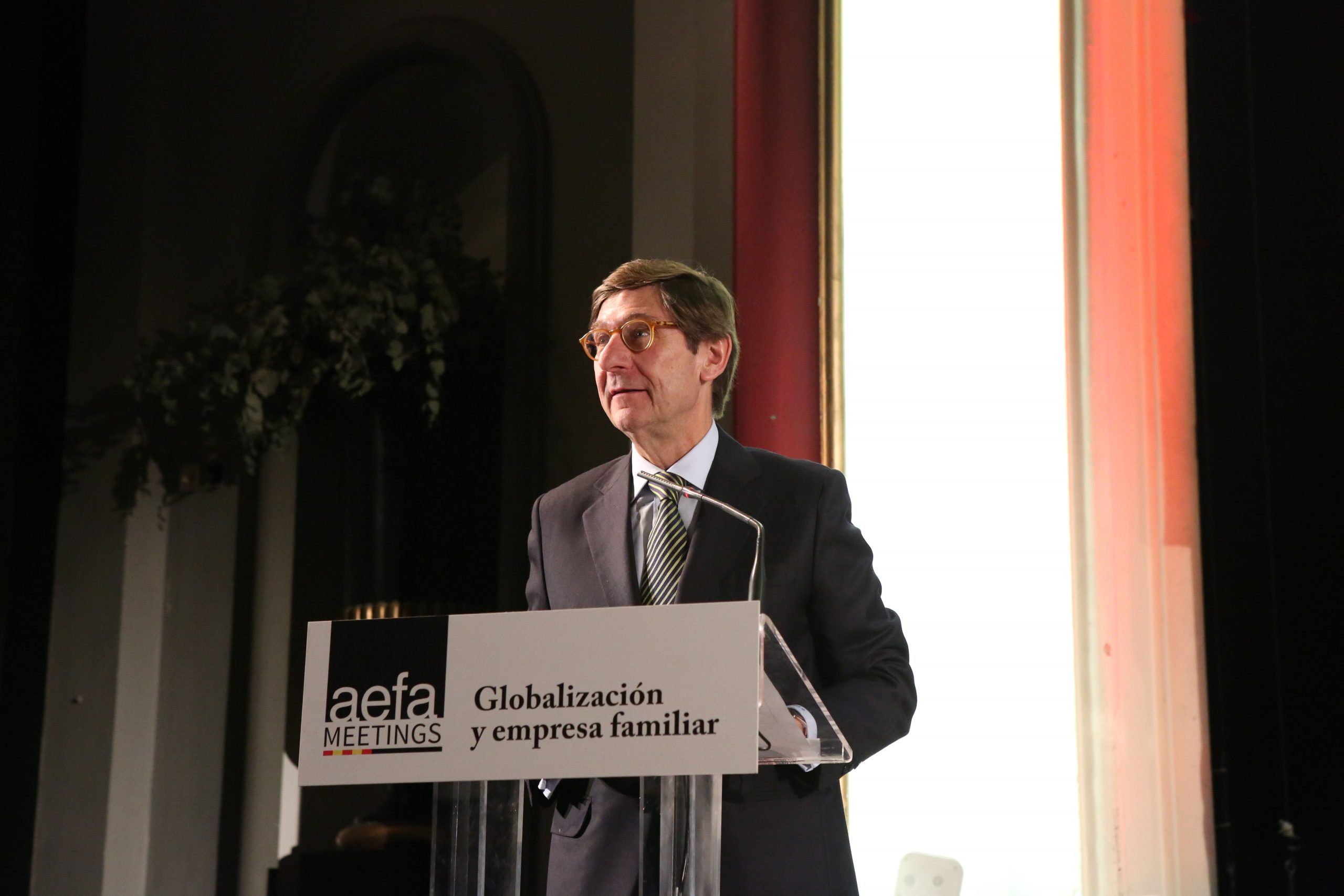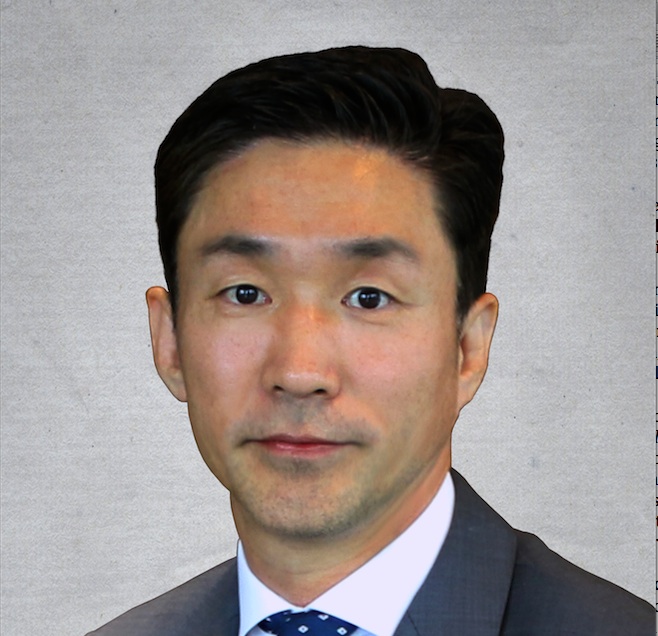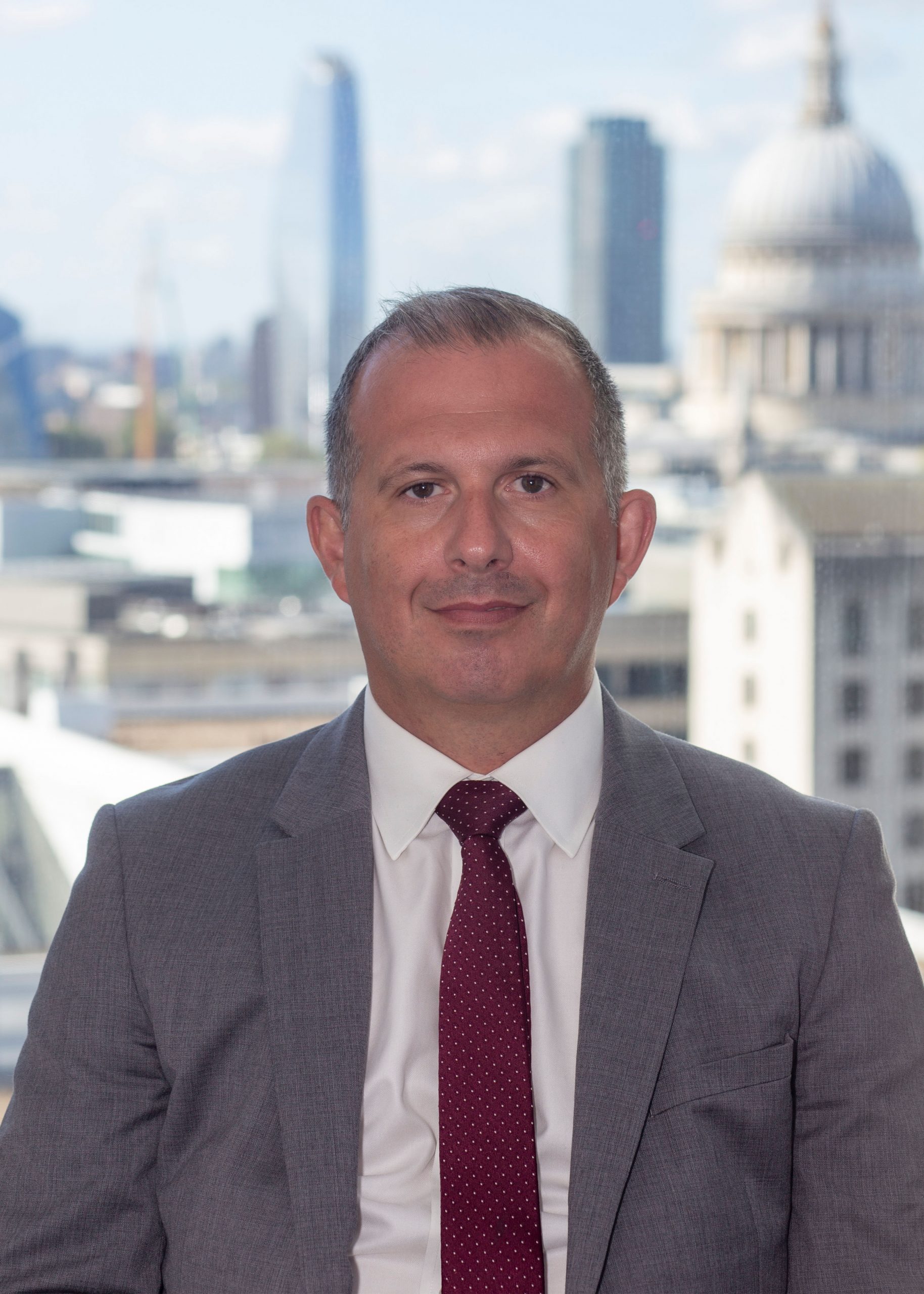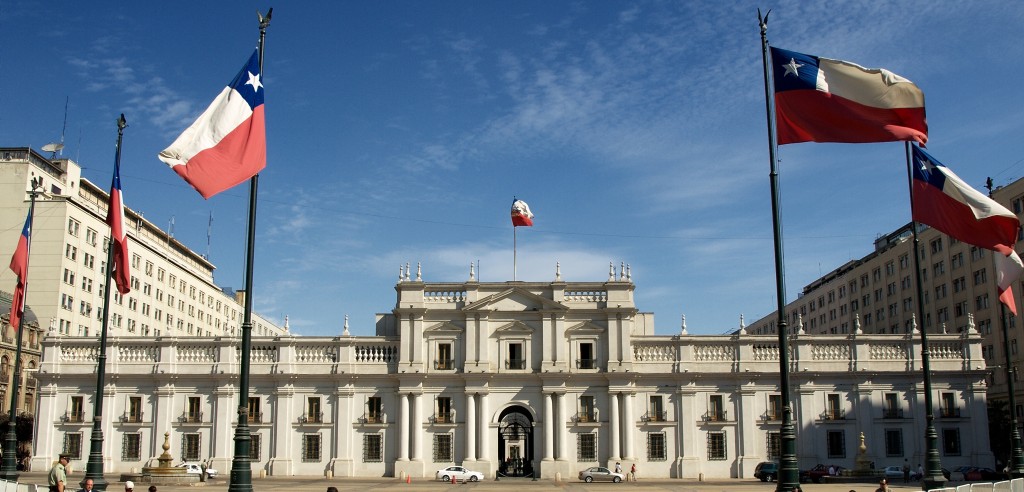Goirigolzarri (Bankia): “Una vez más, el mundo está resolviendo sus crisis con la misma receta: mayor endeudamiento y menores tipos de interés”
| Por Sofia Cisneros | 0 Comentarios

El presidente de Bankia, José Ignacio Goirigolzarri, aseguraba recientemente en una ponencia que el sector financiero europeo debe reflexionar sobre su modelo de negocio dados los tres grandes retos a los que se enfrenta en la actualidad: la reducida rentabilidad por los tipos de interés negativos y las fuertes exigencias regulatorias, el cambio de hábitos de los clientes por la irrupción de las nuevas tecnologías y la reputación del sector.
Goirigolzarri ha participado en Zaragoza en la jornada ‘AEFA Meetings’, organizada por la Asociación de la Empresa Familiar de Aragón (AEFA) y la Cámara de Comercio, Industria y Servicios de Zaragoza, y ha pronunciado un discurso sobre “Las perspectivas del sector bancario y su evolución”.
Al evento, titulado “Globalización y empresa familiar”, han asistido cerca de 200 empresarios de Aragón, entre ellos, el presidente de AEFA, Alfonso Sesé; y el presidente de la Cámara de Zaragoza, Manuel Teruel, además del director corporativo de Negocio de Empresas Cataluña-Baleares de Bankia, José Manuel García Trany.
En este marco, el presidente de Bankia ha defendido que la rentabilidad de la banca europea está por debajo del coste de los fondos propios por el fuerte incremento de las exigencias de capital y por los tipos de interés negativos, lo que ha llevado a que coticen al 50% de su valor en libros, mientras que los bancos americanos, donde ninguno de estos factores se ha dado, tienen una capitalización un 17% superior a su valor en libros.
Esta situación, ha reseñado, no es solo un problema para el sistema financiero, sino para el conjunto de la economía, porque “un país necesita un sistema financiero sólido y además rentable, dado que si la rentabilidad está por debajo del coste de capital que requieren los inversores, los bancos no podrán acudir al mercado, el sistema estará infracapitalizado y, por tanto, no podrá incrementar sus carteras de créditos y, en consecuencia, no podrá financiar a su economía, siendo un freno a su desarrollo”.
“Obviamente, los gestores bancarios deben reaccionar ante esta situación, dentro de los márgenes de actuación que tienen, y una de las palancas clave está sin duda en la tecnología”, ha incidido el presidente de Bankia, quien ha remarcado que “la tecnología nos permite mejorar nuestra eficiencia y, al mismo tiempo, dar un excelente servicio a nuestros clientes”.
En este sentido, ha considerado que los nuevos jugadores que están entrando en el sector financiero “son buenos para los clientes, que así consiguen un servicio de gran calidad con excelentes condiciones, y también para los competidores, porque les obliga a mejorar y a muscularse en el servicio a los clientes”. No obstante, ha abogado por que “esa competencia tenga reglas comunes, no sólo por razones de equidad, sino también porque este tipo de situaciones generarían arbitrajes regulatorios que, como hemos visto en el pasado, son fuente de desestabilización del sistema”.
“La banca debe regirse por criterios profesionales y éticos excelentes”
El último reto del sector financiero al que se ha referido Goirigolzarri ha sido la reputación. A su juicio, “un proyecto, un sector, o una compañía solo es sostenible en el tiempo si la sociedad quiere que existas, si entiende que eres útil. Y por ello creo que es muy importante que expliquemos que un sistema financiero sano y rentable es clave para el bienestar de los ciudadanos de un país”.
Pero, para ello, “es indudable que el sector bancario debe regirse por unos criterios profesionales y éticos excelentes porque si no, estará sujeto a una permanente sospecha que se traducirá en una gran debilidad”, ha subrayado, antes de añadir que este debe ser un objetivo para todas y cada una de las entidades como medio para la mejora de la reputación del sector.
Tras poner sobre la mesa los grandes retos que la banca europea y española tienen por delante, Goirigolzarri ha defendido que “la banca española es un sector solvente y bien capitalizado, como han demostrado las últimas pruebas de estrés realizadas por el BCE”. Y todo ello ha sido gracias a una transformación brutal del sector en la última década motivada por un enorme proceso de consolidación y por un gran esfuerzo en el fortalecimiento de los balances.
Su primera preocupación cuando entró en Bankia era la reputación del banco
En relación a Bankia, Goirigolzarri ha admitido que su “primera preocupación” cuando se incorporó a la entidad fue la reputación y esa fue una de las razones para cambiar totalmente el Consejo de Administración para dotarse de “un excelente gobierno corporativo”.
“En el año 2012 nosotros recibimos una fuerte ampliación de capital”, ha recordado, para admitir que “fueron años muy complicados” pero, a finales de 2017, la entidad cumplió todos los objetivos del Plan de Reestructuración, lo que permitió a Bankia convertirse en un banco que compite en idénticas condiciones que el resto y que pudo, en este sentido, fusionarse con BMN en 2018.
A este respecto, ha apuntado que no tener restricciones ha permitido a Bankia incrementar fuertemente su cuota en empresas, lo que, ha dicho, es prioritario. “Este crecimiento de cuota en empresas lo estamos teniendo de forma muy viva en Aragón, a cuyo tejido empresarial estoy agradecido por su confianza”, ha trasladado a los empresarios aragoneses.
El primer ejecutivo de la entidad ha destacado que Bankia tiene los mismos retos estratégicos que tiene el sector, al que se suma el de la privatización, pero ha puesto en valor que cuenta con dos puntos fuertes muy importantes, como son un modelo que ha generado una fuerte cantidad de capital, lo que hace que Bankia sea “el banco más solvente entre los grandes bancos españoles, y que sea muy eficiente”, ha remarcado.
“Bankia no es sólo un proyecto profesional muy atractivo, sino que, además, es un proyecto de fuerte impacto social”, ha asegurado. “Desde el realismo más absoluto, les puedo asegurar que, por falta de compromiso, trabajo, ilusión y ganas, esto no va a quedar”, ha incidido.
Grandes retos de la economía española: el desempleo y el nivel de deuda pública
En materia macroeconómica, el presidente de Bankia ha alegado que “debemos ser muy prudentes en términos de política económica porque, de la misma forma que la economía española tiene elementos de inercias positivas y crece claramente por encima de la media europea, pero existen riesgos en el medio plazo, que debemos priorizar y gestionar». A su juicio, los grandes retos estructurales de nuestra economía son el desempleo y el nivel de deuda pública.
Con todo, Goirigolzarri ha subrayado que en los últimos seis años la economía española ha crecido con fuerza y que España ha entrado en una nueva fase del ciclo expansivo. “Debemos ser conscientes de que los riesgos a la baja, derivados del exterior tienen un claro impacto en nuestro país, ya que se ha transformado enormemente”.
Sobre el contexto internacional, ha asegurado que “el mundo ha vivido unos crecimientos económicos muy razonables y sincrónicos entre las distintas regiones”, pero que la economía mundial es ahora más dependiente de Estados Unidos, mientras la economía europea está en un proceso de desaceleración.
Goirigolzarri ha reconocido que la evolución económica se ve sometida a riesgos a la baja y que este verano hemos sido testigos de cómo algunos de estos riesgos han ido materializándose, ha lamentado, para advertir de que “una vez más, desde los años 70, el mundo está resolviendo sus crisis con la misma receta: mayor endeudamiento y menores tipos de interés”.









